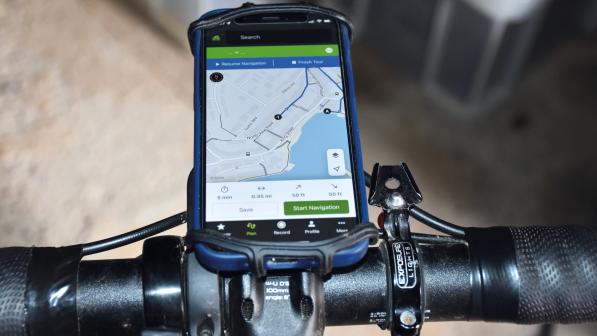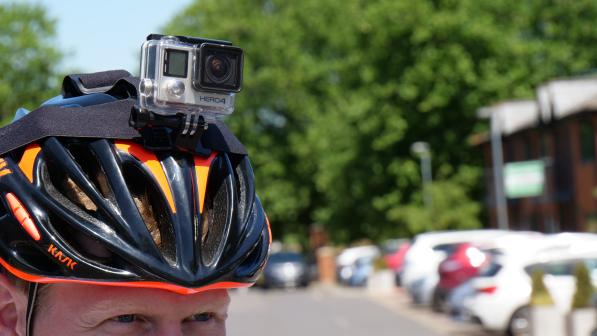Choose the best helmet cams - group test

Helmet cameras are increasingly being used by commuters to capture evidence of bad driving. That’s why I started using one eight years ago. They can also be used to record mountain bike rides or sportives, or you might use one for a video diary while touring.
Despite the name, a helmet camera doesn’t have to go on a helmet. It can be mounted on your bike’s handlebar or frame or, with the right mounts, on your shoulder, chest or head. How you’ll use the camera and where you’ll mount it will dictate, to an extent, the size and shape required. You’ll also need to decide how good the resolution needs to be, how long the battery needs to last, and how weatherproof it needs to be – in the UK, very!
Shimano Sport Camera CM-1000 - £199.99

This camera has by far the best form factor of all of the cameras on test. It’s small, light and discreet when placed on a helmet. Mounting options that come with the camera are limited, although it is GoPro compatible. The lens gives a wide field of view, which results in fish-eye distortion at the edges. Picture quality itself is crisp in good light, with excellent colour reproduction. Nighttime footage is good as well, especially under street lighting.
The LED indication system is a little confusing, however, and it can be difficult to tell if your camera is on or not in bright light. It has WiFi, enabling you to control it via your phone, which can be fun, though of possibly limited use. Its integral battery lasts for a reasonable two hours. The camera is waterproof without the need for a case.
Verdict: Small, light, weatherproof, and well suited for helmet use
Garmin Virb - £219.99

This camera is the bulkiest here. You could wear it on your helmet but you and everyone else would definitely know it was there. The bike mounts are bulky too but are secure and have GoPro-compatible options. The field of view is not the widest but will be enough for most. Picture quality is generally very good; you get some distortions in the video due to vibration (rolling shutter wobble). Nighttime quality is pretty good. I did notice some image flicker when under certain types of street lamp.
The camera comes with an LED screen that is visible at night. That isn’t back-lit, to save power, so it’s no use in bright daylight. Battery life is excellent: just over three hours per charge. The battery is replaceable, so you could film for longer. The recording LED is easy to see and the switch to record is easy to use. The camera did freeze on me once. The Virb is waterproof out of the box.
Verdict: Rather heavy for helmet use but fine on the bike and battery life is good
Rollei Actioncam 410 - £109.99

The Rollei is the same size and shape as the GoPro and uses a similar waterproof (to 40m) case. Mounts are GoPro-compatible too. Field of view is fine, but picture quality is the poorest of the cameras here. It suffers from blockiness, especially when there are changes from dark to light, suggesting the data compression isn’t good.
Sound is muffled when in the case. Nighttime quality isn’t very good; the images are dark and noisy. It’s difficult to tell when the camera is fully-charged as the charging LED never seems to switch off. It does have a reasonable LED screen where you can review footage. The replaceable battery lasts two hours. The camara froze once. I resolved it by reformatting the micro-SD card. On the plus side, this Rollei camera is fairly cheap.
Verdict: Its waterproof case is robust but this budget camera’s picture quality isn’t great
GoPro Hero4 Black - £409.99

This is by far the most expensive of the cameras, but to an extent you get what you pay for. The mounts provided are good quality and lots of others are available. You have a lot of options for filming and field of view. It will film in ultra-high definition (4k, or about 4,000 pixels) although this significantly limits battery life. I generally used it in 1080p mode. Footage shot like this lacks the detail available in 4k but is still better than any of the other cameras, with crisp images and good colour reproduction. It’s less impressive in nighttime mode – about on par with the Shimano camera.
The button system and the menu take a little while to get used to and the front LED screen is a bit small, but once you know what you are doing it is pretty easy to use. The battery is replaceable, which is probably just as well: I managed only 1.5 hours in 1080p mode. The waterproof case is tough.
Verdict: Shorter battery life seems to be the price for excellent video

